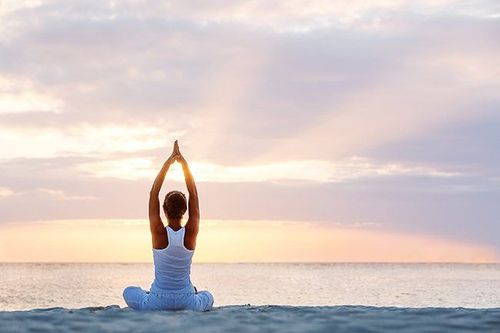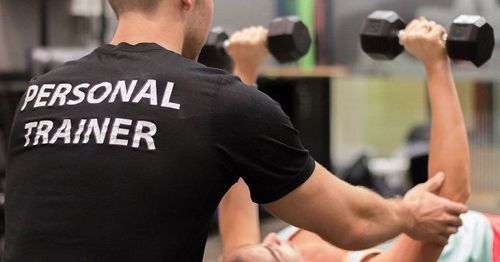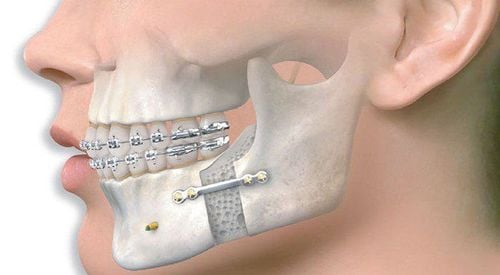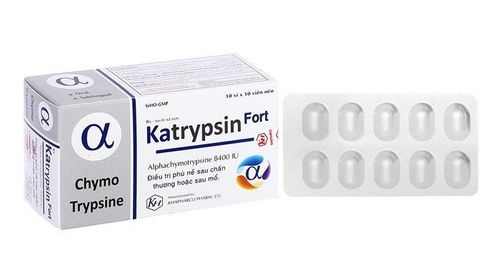This is an automatically translated article.
Playing sports or hitting the gym can improve physical and mental health, reduce the risk of chronic diseases, and stay in shape. If you want to exercise but don't know where to start, you can refer to the effective gym exercises below.
1. Popular Exercises
There are many different forms of exercise, including:
Aerobic: Usually the core of any fitness program, requiring the body to be in constant motion. Examples include swimming, running and jumping movements; Muscle: Helps increase muscle strength and endurance. Examples include strength training exercises, jumping jacks, weight lifting and sprinting; Calisthenics (Street Sports): Trainers use their own body weight for strength training without the need for exercise equipment. Examples include lunges, sit-ups, push-ups and pull-ups; High-intensity interval training (HIIT): High-intensity interval training. Recovery time, short rest between sets, practice until exhaustion; Soldier training model: Short-term, high-intensity exercises, combining aerobic and strength movements; Balance: Strengthens muscle strength and improves body coordination. Examples include Pilates, tai chi and core focus; Endurance: Aids in muscle recovery, extends the range of motion of the joints and prevents injury. For example, Yoga or stretching movements. The above exercises can be done individually or in combination. It is important that you choose the form that is right for you so that you can stick with it for a long time.

Tập luyện Yoga giúp hỗ trợ phục hồi cơ bắp
2. Preparation steps
2.1. Health Checkup It is necessary to consult a doctor and have a health check before starting a new exercise. Especially those who are not used to regular exercise, as well as people aged 45 and over.
This helps detect any health problems early that could lead to injury during exercise. In addition, you and the coach will also understand your own limitations, thereby offering the most effective and suitable gym training for your needs.
2.2. Make a plan and set realistic goals When you decide to start exercising or playing a sport, you need to create a plan that includes the steps and goals you want to achieve. Gym tutorials for beginners often start with easy-to-follow steps. Then adjust the schedule as you get used to the old level.
For example, if your goal is to run 5km a day, start planning to run shorter and increase it day by day until you reach your goal. Starting with small goals not only increases your chances of success, but also keeps you motivated to keep going every day.
2.3. Creating a Habit Another important factor in hitting the gym properly is sticking to the routine. You will be easier to maintain a fitness routine for a long time if you do it regularly.
The best way to create a habit is to exercise at the same time every day. For example, you might go to the gym right after work every day. Or replace an unhealthy behavior in your free time (eg playing games, going on social media, ...) with a new healthy habit of playing sports and exercising properly.

Chơi thể thao và tập thể dục là một trong những thói quen lành mạnh hiện nay
3. How much exercise is enough?
Sports organizations recommend at least 150 minutes of moderate-intensity aerobic exercise each week. You can exercise for 30 minutes 5 times a week or 35-40 minutes a day. Recent studies show that going to the gym 1-2 times per week is just as beneficial as exercising daily throughout the week.
Overall, it's important to start slowly, increase the intensity gradually, and don't forget to give your body a break. Not having enough time to recover from intense workouts can increase your risk of injury from overtraining. Too much exercise will also weaken the immune system and increase the risk of infections, hormonal imbalances, depressed mood and chronic fatigue.
To maintain the motivation to practice and see this as a habit, you need to feel really happy, love the training hours instead of fear, boredom. You can mix a variety of workouts together to avoid boredom, or join a fitness class or hire a personal trainer to increase motivation and enjoyment. Exercising with a friend can also foster a sense of responsibility and further work toward your goals. In addition, you should keep a workout diary to track your progress, thereby creating motivation to improve better day by day.
4. How to exercise effectively in a week
The following one-week gym workout guide for beginners is easy to follow. You don't need complicated equipment and it only takes 30 - 45 minutes a day to complete, can adjust the level and take on additional challenges if desired. Specifically:
Monday: Jog 40 minutes at a moderate pace or walk briskly. Tuesday: Rest. Wednesday: Walk briskly for 10 minutes. Then, complete the following exercises, resting for 1 minute between sets:
Exercise 1: 3 alternating reps, 10 lunges each time, push-ups, sit-ups.
Exercise 2: 3 alternating times, 10 times each time with chair push-ups, jumping high-fives, squats.
Finally, stretch the muscles.

Bạn có thể nhờ sự giúp đỡ từ huấn luyện viên giúp bạn có lịch tập phù hợp
Thursday: Rest. Friday: Cycle for 30 minutes or jog at a moderate pace. Saturday: Rest. Sunday: Run or walk for 40 minutes. This beginner gym guide is just one example to help you get started in the gym the right way. There are also many other effective gym exercises you can refer to and perform.
5. Tips for beginners
5.1. Drink plenty of water Drinking plenty of water throughout the day helps maintain healthy energy. Replenishing fluids during exercise is important for proper fitness, especially when exercising or playing sports in hot climates. Plus, rehydrating after a workout helps you recover and get ready for the next workout.
5.2. Optimizing Nutrition A well-balanced diet will help you hit the gym the right way. All food groups are needed to maintain healthy energy levels and get the most out of your workouts.
Carbs are especially important because they can fuel your muscles before exercising. After a workout, carbs replenish glycogen stores and aid in amino acid absorption into muscles during recovery.

Bổ sung đầy đủ chất dinh dưỡng giúp bạn có nguồn năng lượng tốt
Protein will improve muscle recovery after exercise, repair tissue damage and build muscle mass. Regular consumption of healthy fats has also been shown to burn body fat and conserve muscle fuel during exercise, helping you last longer.
5.3. Warm-up This step is very important and can help prevent injury and improve sports and exercise performance. Warm-up also improves joint flexibility, helping to reduce post-workout soreness. Some simple warm-ups include: shaking hands, kicking legs, and walking.
5.4. Stretching Stretching is also very important in the gym guide for beginners. A few minutes of stretching can help bring the body back to normal, restore blood circulation and breathing, and even relieve muscle soreness. Some forms of stretching include: walking lightly or stretching after exercise.
5.5. Listen to your body If you're not used to being physically active, be mindful of your limits. Stop and rest when you feel pain or discomfort during exercise. Ignoring, ignoring pain can lead to injury.

Tập luyện và nghỉ ngơi khoa học giúp bạn luôn cảm thấy thoải mái
It should be noted that it is not necessary to practice harder and reach your goals quickly when you are just starting out. Taking time to make gradual progress can help you maintain the habit long-term and get the most out of it.
Starting a new exercise routine can be challenging, but if you set specific goals it can be maintained in the long run. There are many different forms of physical activity for you to choose from to suit your interests, fitness levels, and sometimes combine and alternate. Start slow and easy, then gradually increase the level of exercise. Also don't forget to rest your body to help avoid injury, stick to a healthy diet and drink water regularly.
Reference source: Webmd.com













